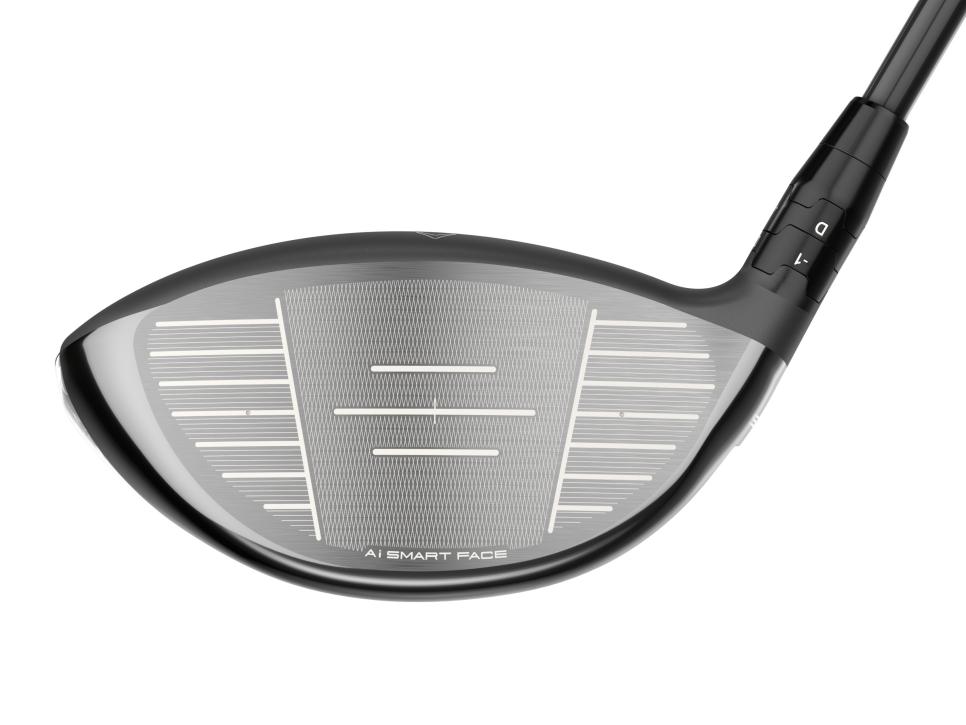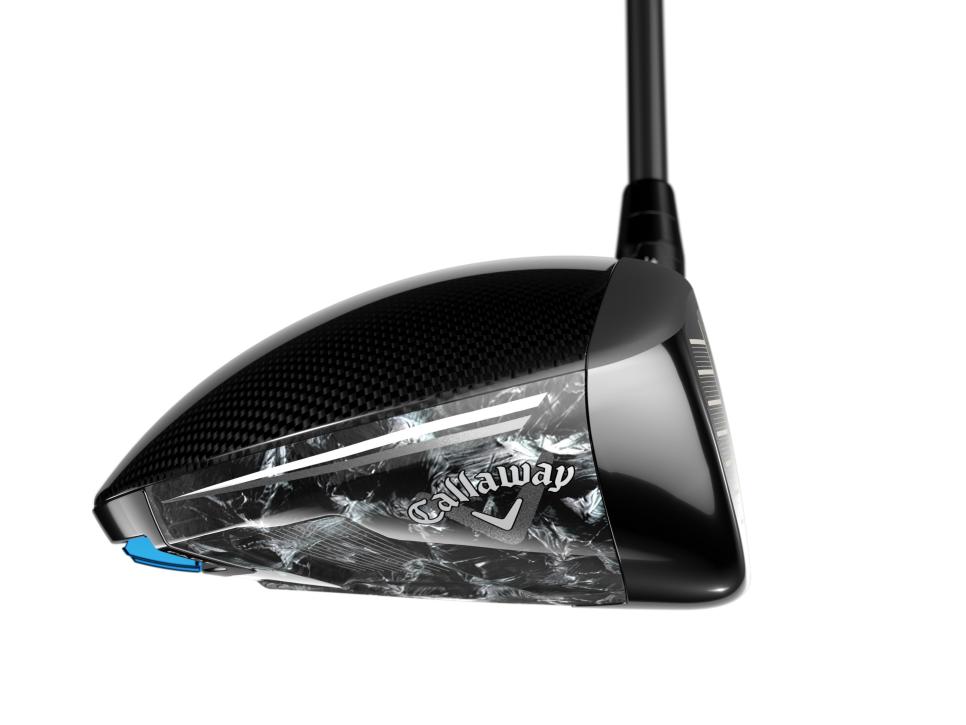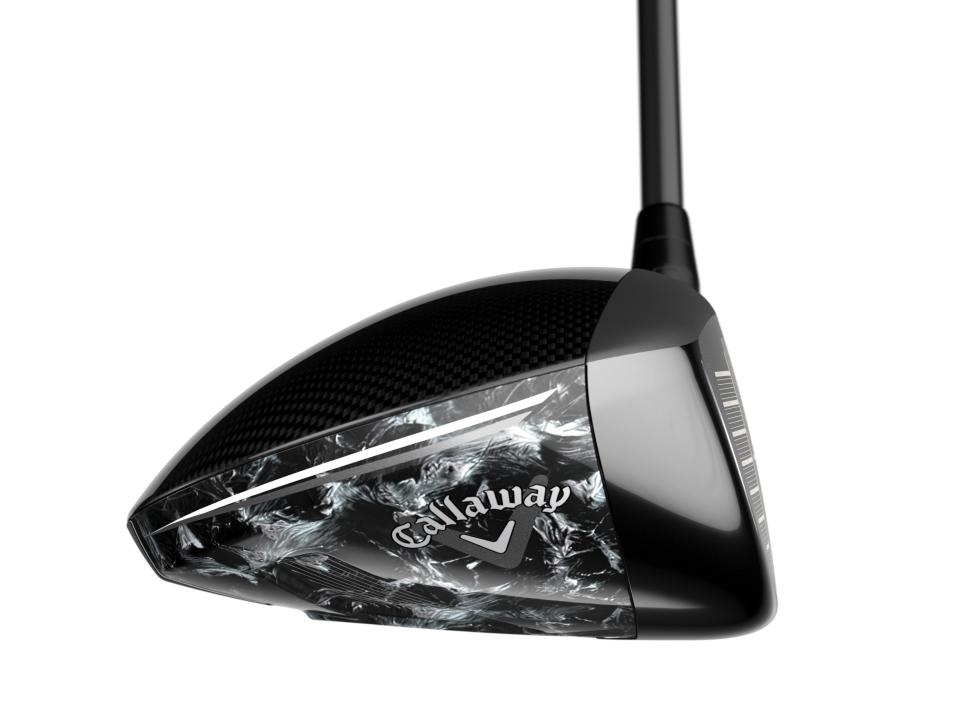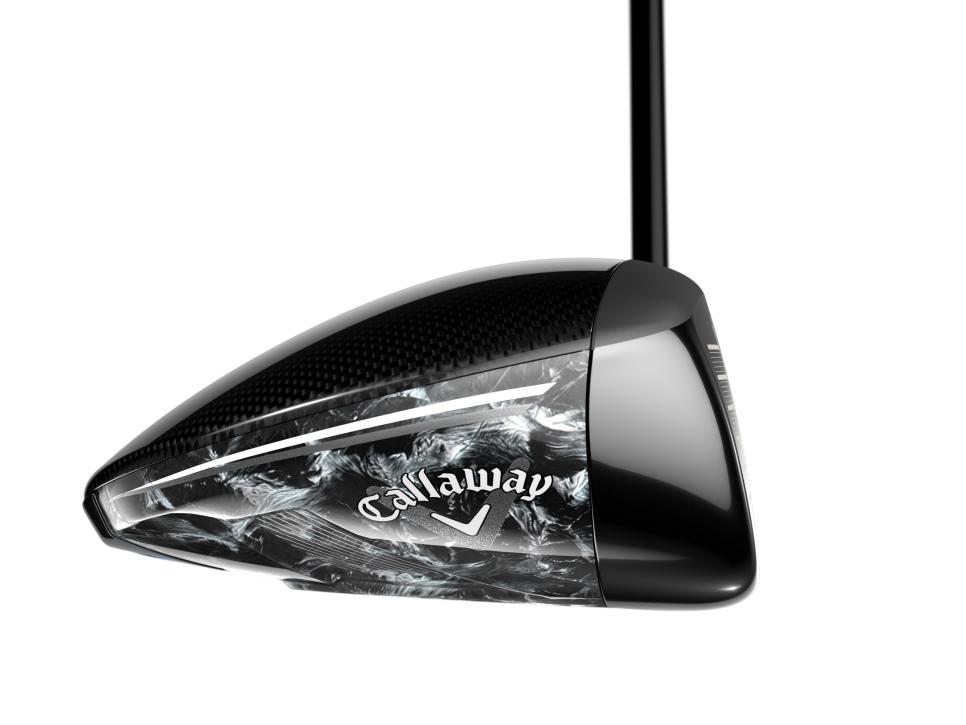WHAT YOU NEED TO KNOW: The Callaway Paradym Ai Smoke family of drivers feature four distinct faces designed through big data, machine learning and artificial intelligence, all fuelled on the details of some 250,000 swings of golfers of all types. Each model mixes varying degrees of adjustability and precise weight distribution tailored to how the drives of certain player groups fly. That weight savings is made possible by a body made almost completely of carbon composite, aside from the face. That face is designed with specific thicknesses and sworls and edges that create “micro-deflections” that can do everything from enhancing off-centre ball speed to optimising spin and launch.
Callaway Paradym Ai Smoke fairway woods: What you need to know
PRICE: $1,069.99 ($NZ1,269.99). Paradym Ai Smoke Max (9, 10.5, 12 degrees); Paradym Ai Smoke Max D (9, 10.5, 12 degrees); Paradym Ai Smoke Max Fast (10.5, 12 degrees); Paradym Ai Smoke Triple Diamond (8, 9, 10.5 degrees). All feature an eight-way adjustable hosel, except for Max Fast. Available for pre-sale on January 12, at retail January 26.

Ai Smoke Max
3 COOL THINGS
1. The first time ever I saw your face…and your face… and your face. We’ve talked for half a decade about how Callaway’s R&D effort in driver design has been fuelled by the use of artificial intelligence. This has been particularly so in the design of driver faces and how the pattern of variable thicknesses, what the designers call “topology”, rises and falls like a roiling sea current. It’s a thoroughly unexpected pattern but its non-intuitive shaping – unique to each of the four models in this series – is used to create optimal ball speed, launch and spin for a collection of four player types. Those types range from the slower swinger who needs more launch for a collection of impacts that stretch the breadth of the face to a lower-launching slicer to an elite-swinging shotmaker whose typical impact pattern is barely bigger than a quarter.
But what’s different about these faces this time is how the designs weren’t a relatively simple calculation of how off-centre impacts might be improved. The first Callaway AI-influenced face design was focused entirely on trying to maximise distance all over the face, but it was fairly limited in its focus and wasn’t using impact and ball flight data to power the direction of its designs. Beyond thinking about just the ball-clubhead collision, this new approach with the Paradym AI Smoke family started from where shots should finish and worked back to the best ways to get the ball to go where it should.

Ai Smoke Max
What made those calculations more precise this time is the overwhelming amount of data from real golfers swings that determined how the driver was arriving at the ball and how those ball flights were occurring and how those results could be improved. The key was designers already had the data in hand. Literally hundreds of thousands of swings were documented to feed the supercomputers’ processes for figuring out the perfect face for each player. These millions of data points, ranging from launch angle and spin to club path and angle of attack and loft at impact for each swing, resulted in what the Callaway team was calling the “swing code” for each player type. Understanding that a toe hit for a slicer was the result of a different type of swing than a toe hit from a tour player meant the face thickness needed to be designed differently for those two kinds of players to be optimised.

Ai Smoke Triple Diamond
“We’ve generated all of this data and then the trick was how do we incorporate that data into our simulations and our optimisations in a meaningful way,” said Evan Gibbs, Callaway’s director of research and development for woods. “So every individual player has their own swing code, the characteristics of how they deliver the club head to the ball, their tendencies for how this head delivery changes according to impact location.
“It’s utilising the face flexure and locally optimising the face design based on what’s needed to provide the optimum trajectory… that’s where we really knew that there was another gear in AI, that the more sophisticated data in was going to lead to more sophisticated data out.”
In the most direct terms, these face designs are maximising the most efficient impacts and minimising the negative effects of any of the least efficient impacts. The possibility of more successful impacts is the result of what Callaway is calling “microdeflections” built into the performance of the face. According to Gibbs, they allow the face to produce better distance and tighter dispersion for each player type without having to compromise a certain shape or CG location or even the pursuit of a particular moment of inertia measurement. In fact, chasing a higher and higher MOI or a particular CG location might lead to compromises in shape or launch conditions that can’t otherwise be overcome.

Ai Smoke Max Fast
“That’s really one of the insights that drove this AI journey to try and look for a way to raise that ceiling beyond just looking at rigid body mechanics,” Gibbs said. “How can we leverage other aspects of the design that don’t necessarily have those potential consequences of something like ultra-high MOI and allow us to get beyond where were with just a rigid body approach to let us raise the ceiling for better overall performance.”
2. Classy chassis. That said, all of the face improvements don’t supersede any improvements in the overall mass properties of these four designs. Driving those possibilities is once again a body that is composed of more carbon composite than anything else. Now combined with an internal titanium ring around the perimeter, the body of these drivers is 15 percent lighter, saving even more weight than a 100-percent carbon composite body by not having to excessively thicken various regions to build in stability. In short, the combination of titanium and less carbon composite makes for a lighter frame. That frees up mass to do different things from interchangeable and sliding weights to an overall lighter structure to help increase swing speed potential for moderate speed players.
“This weight savings of six grams can go back into the club head and help lower spin, help increase MOI and give us all the kind of mass property advantages that we were looking for,” Gibbs said.

Ai Smoke Max
3. Four on the floor. The four models in the Paradym AI Smoke family appear to be so distinct that choosing the right model is really the only way to optimise each individual golfer’s potential – and choosing the wrong model likely would make certain players worse.
The Max should fit the largest chunk of the population and provides the most stable head in the family. It also adds a 14-gram rear perimeter sliding weight to more tightly tune your mishits and swing pattern. The target player swings in the 90 to 105 miles-per-hour range.

The Max D features the most expansive shape with the largest face area. There’s a natural built-in anti-slice bias (about 10 more yards of draw compared to last year’s Paradym X, Callaway says), and the fixed rear weight is lower than past models for added stability and the highest launch in the family. Target swing speed is between 80 to 95 miles per hour, with a steeper, outside-to-in swing path.

The Max Fast is the lightweight option that in the past has been part of the “Star” line of Callaway driver models. At 34 grams lighter than the Max or Max D models, it still maintains a D2 swingweight, saving more mass by opting for a lighter fixed hosel instead of an adjustable one. It features a similar chassis to the Max D, with a built-in draw bias. A low backweight helps to make this model the highest-launching of the family.

The Triple Diamond focuses on the elite player in mind with the face design tweaked to enhance performance on hits around the middle of the face. Slightly undersized and compact in shape at 450 cubic centimetres, it produces the lowest spinning flight. Interchangeable rear and forward sole weights allow a player to alter spin and launch. It targets swing speeds over 105 miles per hour.
